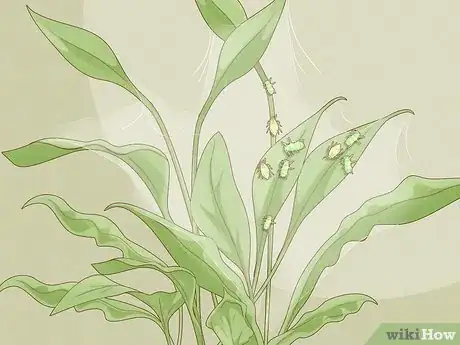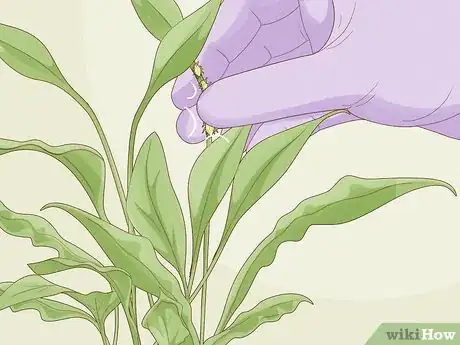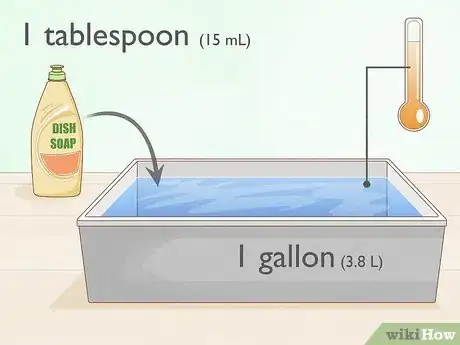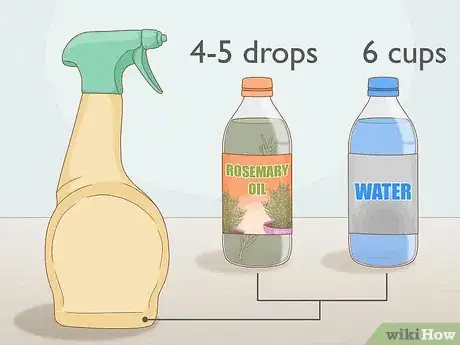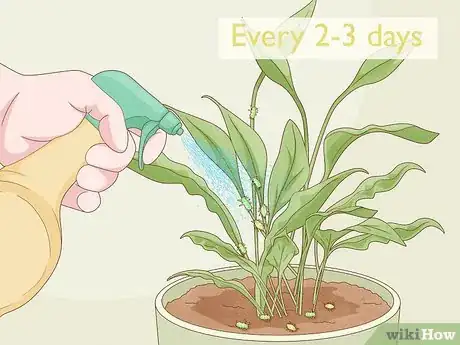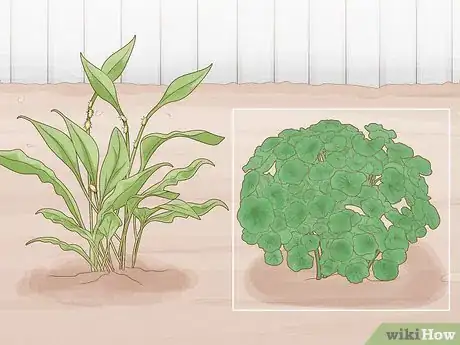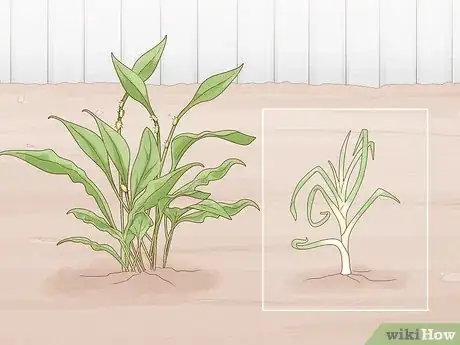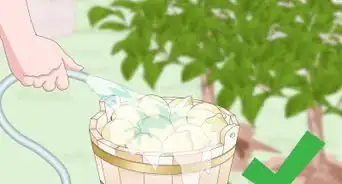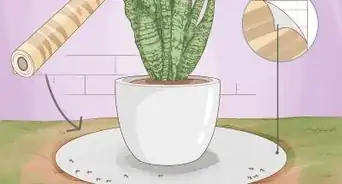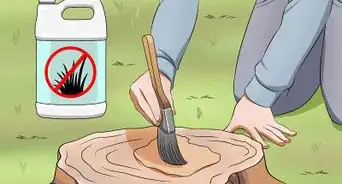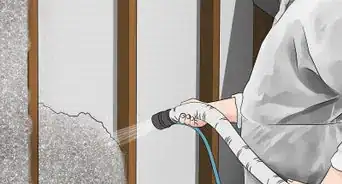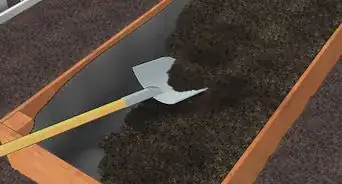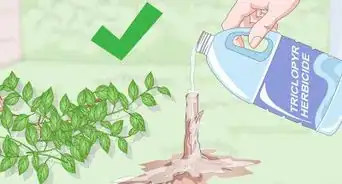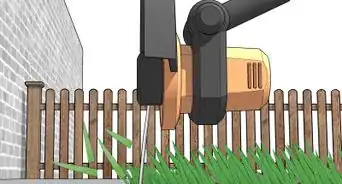This article was co-authored by Steve Masley. Steve Masley has been designing and maintaining organic vegetable gardens in the San Francisco Bay Area for over 30 years. He is an Organic Gardening Consultant and Founder of Grow-It-Organically, a website that teaches clients and students the ins and outs of organic vegetable gardening. In 2007 and 2008, Steve taught the Local Sustainable Agriculture Field Practicum at Stanford University.
There are 8 references cited in this article, which can be found at the bottom of the page.
wikiHow marks an article as reader-approved once it receives enough positive feedback. In this case, 100% of readers who voted found the article helpful, earning it our reader-approved status.
This article has been viewed 249,168 times.
Aphids, also known as tree lice, are tiny little insects that can wreak havoc on your plants. If left unchecked, they can destroy entire gardens. Although insecticides will effectively kill aphids, they may damage your plants, and they’re not great for the environment. Fortunately, there are plenty of things you can try to eliminate your aphid problem that are natural and eco-friendly.
Steps
Removing Aphids Manually
-
1Look for the cottony threads and residue of aphid damage on your plants. Look on the underside of leaves, around new growth, and anywhere else on your plants for the classic cotton-looking threads and residue of aphid damage. Check around for large groups of the small insects, which are often green, but can be different colors, depending on the species.[1]
- Usually, the aphids aren’t too far away from where they’ve just eaten, so finding the damage is an easy way to look for them.
- There are often more than 1 group of aphids, so examine all of your plants to try to spot them.
-
2Squish the aphids with your fingers to remove them. If you’ve spotted a group of aphids, put on a pair of rubber gloves and use your fingers to squeeze them to kill them. Try to catch as many as you can if they try to run as well. Look for the small insects and pick them off by hand to remove them without having to use any chemicals or products.[2]
- If you have a small number of aphid groups, manually removing them a few times a week may be enough to control the problem and keep them from damaging your plants.
Advertisement -
3Spray the aphids with a garden hose to blast them off your plants. Focus a jet stream of water from your garden hose directly onto a group of aphids. Be careful not to damage your plants as you blast the bugs off of them. Check your plants for aphids every 2-3 days and spray them off to control their population.[3]
- Eventually, the aphids may move on to another area and leave your plants alone.
-
4Sprinkle flour over the aphids with a sifter to knock them off. Add some standard all-purpose flour into a sifter or sieve. Locate a group of aphids and cover them with the fine powder to coat them and cause them to slip off of your plants. The flour will wash or fall of your plants within a few days.[4]
- Don’t worry, the flour won’t damage your plants.
Making an Eco-Friendly Aphid Spray
-
1Mix 1 tablespoon (15 mL) of dish soap with 1 gallon (3.8 L) of warm water. Fill a medium-sized bucket with warm water and add in a mild liquid dish soap. Stir the mixture well so it’s fully combined and it’s nice and soapy.[5]
- Use warm water so the soap combines with it more effectively.
-
2Use neem oil or essential oils for a natural aphid spray. Add 4-5 drops of an essential oil such as peppermint, clove, rosemary, and thyme to about 6 cups (1,400 mL) of water for a natural alternative that will keep aphids out of your garden. Neem oil is also an effective repellent. Dilute the neem oil with the amount of water recommended on the packaging.[6]
- You can find neem oil at your local hardware or home improvement store. You can also order it online.
-
3Fill a hand sprayer with the solution. Use a pump hand sprayer and carefully pour the soapy water, neem oil, or diluted essential oil into the container. If you can’t fit all of the solution into the bottle, keep it set aside so you can refill it if you need more. Close the lid tightly on the sprayer so the liquid won’t leak out.[7]
- A hand sprayer will make it easier for you to coat the underside of the leaves and spray a wider swath of plants.
- You can find hand sprayers at your local hardware and home improvement stores. You can also order them online.
Tip: If you don’t have a hand sprayer, you can use a spray bottle.
-
4Spray down the leaves, stems, and buds of the plant. Spray the solution all over your plants to get rid of the aphids. Focus on areas where the aphids like to congregate such as the new growth, and especially on the underside of the leaves. Even if you can’t see aphids, spray down all of your plants to keep them from spreading.[8]
- The soapy solution serves as a mild insecticide that will effectively kill the aphids quickly, without harming your plants.
- Neem oil and essential oils will linger on the plants and keep the aphids from coming back.
-
5Apply the solution every 2-3 days until you don’t see any more aphids. Take your sprayer out and coat your plants every couple of days. Periodically examine your plants and look for aphids. After a few weeks of regularly applying the solution, all of the aphids will be gone.[9]
- Depending on how serious your infestation is, it could take as little as 1 or 2 applications to eliminate your aphid problem.
Using Natural Deterrents
-
1Grow nasturtiums near your plants to draw the aphids away. Nasturtiums are easy-to-grow annuals with bright yellow, orange, and red flowers, and aphids absolutely love them. Use nasturtiums as a decoy plant that will attract any aphids to them by planting them in your garden near the plants you want to keep the aphids away from. When the aphids congregate on the nasturtiums, use an aphid spray or manually remove them to get rid of them.[10]
- Choose mature nasturtiums from your local nursery to plant them and have them start attracting aphids right away.
-
2Plant natural deterrents like garlic and petunias in your garden. Aphids hate some plants, and adding them to your garden near the plants you want to be aphid-free is a great way to deter them. Choose companion plants that aphids dislike and use them as a natural and eco-friendly way to keep aphids away.[11]
- Garlic and petunias also have beautiful flowers so they’re great to plant near roses or other flowering plants that aphids like to eat.
- Other plants that deter aphids include mint, green onion, and chives.
-
3Bury a banana peel in the soil at the base of your plants. Banana peels are a great natural deterrent to aphids. Dig a shallow hole about 1–2 inches (2.5–5.1 cm) deep near the base of your plants and add a small section of banana peel about 4–5 inches (10–13 cm) long. Lightly cover the peel with dirt so it’s still exposed.[12]
- The banana peel will keep the aphids from returning to your plants and will decompose to add nutrients to the soil!
- If you don’t have banana peels, use orange peels instead.
-
4Introduce ladybugs into your garden to eat the aphids. Ladybugs, also known as ladybirds, love to feast on aphids, so adding them to your garden is an effective way to eliminate your aphid infestation. Visit a local nursery or look online for ladybugs that you can purchase and release into your garden.[13]
- Don’t release ladybugs anywhere you’ve sprayed pesticide or they may die as well.
Expert Q&A
-
QuestionHow do you attract beneficial insects?
 Steve MasleySteve Masley has been designing and maintaining organic vegetable gardens in the San Francisco Bay Area for over 30 years. He is an Organic Gardening Consultant and Founder of Grow-It-Organically, a website that teaches clients and students the ins and outs of organic vegetable gardening. In 2007 and 2008, Steve taught the Local Sustainable Agriculture Field Practicum at Stanford University.
Steve MasleySteve Masley has been designing and maintaining organic vegetable gardens in the San Francisco Bay Area for over 30 years. He is an Organic Gardening Consultant and Founder of Grow-It-Organically, a website that teaches clients and students the ins and outs of organic vegetable gardening. In 2007 and 2008, Steve taught the Local Sustainable Agriculture Field Practicum at Stanford University.
Home & Garden Specialist Add flowering plants to attract ladybugs and other natural predators. Flowers will create a habitat for ladybugs, who are the natural enemies of aphids. Also, a lot of little tiny flowers will attract parasitoid wasps, which are gnat-sized insects that lay their eggs in aphids, and leatherback beetles feed on the aphids as well.
Add flowering plants to attract ladybugs and other natural predators. Flowers will create a habitat for ladybugs, who are the natural enemies of aphids. Also, a lot of little tiny flowers will attract parasitoid wasps, which are gnat-sized insects that lay their eggs in aphids, and leatherback beetles feed on the aphids as well. -
QuestionMy swan plants have black and white spotted bugs/insects with little legs. What can I do?
 Community AnswerUse diatomaceous earth. It is made of crushed insect bones and will stab the soft bellies of insects.
Community AnswerUse diatomaceous earth. It is made of crushed insect bones and will stab the soft bellies of insects.
Warnings
- If you bury banana or orange peels, you may attract some animals such as raccoons or rabbits, who may try to dig them up and eat them.⧼thumbs_response⧽
References
- ↑ https://www.bobvila.com/articles/how-to-get-rid-of-aphids/
- ↑ https://www.sundaygardener.net/5-how-to-get-rid-of-aphids/
- ↑ https://www.sundaygardener.net/5-how-to-get-rid-of-aphids/
- ↑ https://pestkilled.com/how-to-get-rid-of-aphids/
- ↑ https://www.sundaygardener.net/5-how-to-get-rid-of-aphids/
- ↑ http://ipm.ucanr.edu/QT/aphidscard.html
- ↑ https://www.sundaygardener.net/5-how-to-get-rid-of-aphids/
- ↑ https://www.bobvila.com/articles/how-to-get-rid-of-aphids/
- ↑ https://www.bobvila.com/articles/how-to-get-rid-of-aphids/
- ↑ https://www.nature-and-garden.com/gardening/nasturtiums-aphids.html
- ↑ https://www.fpconservatory.org/wp-content/uploads/2018/11/3-Companion-Planting-PDF.pdf
- ↑ https://www.popularmechanics.com/home/lawn-garden/how-to/a9251/banana-peels-eggshells-and-more-trash-your-garden-will-love-15699672/
- ↑ http://www.toxicfreenc.org/wp-content/uploads/2016/07/Aphids.pdf
